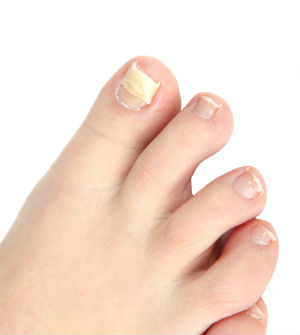12 Interesting Facts About Nail Fungal Infections |  |
| 12 Interesting Facts About Nail Fungal Infections Posted: 05 Aug 2014 08:00 AM PDT  A nail fungal infection, also termed onychomycosis, [1] is a condition that affects the fingernails and toenails. Symptoms are denoted by a thickening and discoloration of the nail, eventually transforming the nail into hues of yellow, green, and even black. As the disease progresses, nail beds can become painful and brittle, and they even begin flaking and breaking off altogether. [2] These conditions are generally absent of any significant discomfort unless they have developed into severe issues.
PrevalenceThis type of infection is surprisingly common these days, and occurrence often increases with age. According to recent statistics, around 3-5% of the population suffer from some type of nail fungus infection. [3] Toenail fungal infections are more prevalent than that of the fingernail yet are largely hidden from view by footwear. In naturopathic teachings, the appearance of a toenail infection can reveal many things regarding overall health. A nail infection may suggest that the nails are receiving poor blood circulation, being among the last areas of the body to receive fresh blood supply. Issues with nail infections may also indicate immune system dysfunction. [4] 12 Facts About Nail Fungal InfectionsWhile you may not suffer from this condition, it’s helpful to be aware of the signs of a nail fungal infection as well as the interesting facts surrounding this issue. [5] [6] [7] [8]
Solutions and TipsStandard solutions for this condition, once accurately diagnosed, include oral and topical antifungal medications, excision of the infected nail, and focused laser therapy. Naturopathic therapies are considered less toxic, less harsh, and more readily available for those without access and/or desire to use orthodox and conventional approaches. Sunlight therapy, application of the affected areas with essential oils (such as tea tree or oregano oil), and hydrogen peroxide are all common examples of the natural approaches to fungal infections. Here are a few simple tips that you can use for fighting fungal infections:
By staying informed and being cautious of the main causes and symptoms of nail fungal infections, you can greatly increase your chances of prevention. If you're suffering from a nail fungal infection it is imperative that you receive immediate attention. Have you ever had a toenail or fingernail fungus infection? What did you do to get rid of it? Please let us and other readers know by leaving your thoughts in the comments! -Dr. Edward F. Group III, DC, ND, DACBN, DCBCN, DABFM References:
The post 12 Interesting Facts About Nail Fungal Infections appeared first on Natural Health & Organic Living Blog. |
| You are subscribed to email updates from Natural Health & Organic Living Blog To stop receiving these emails, you may unsubscribe now. | Email delivery powered by Google |
| Google Inc., 20 West Kinzie, Chicago IL USA 60610 | |
No comments:
Post a Comment